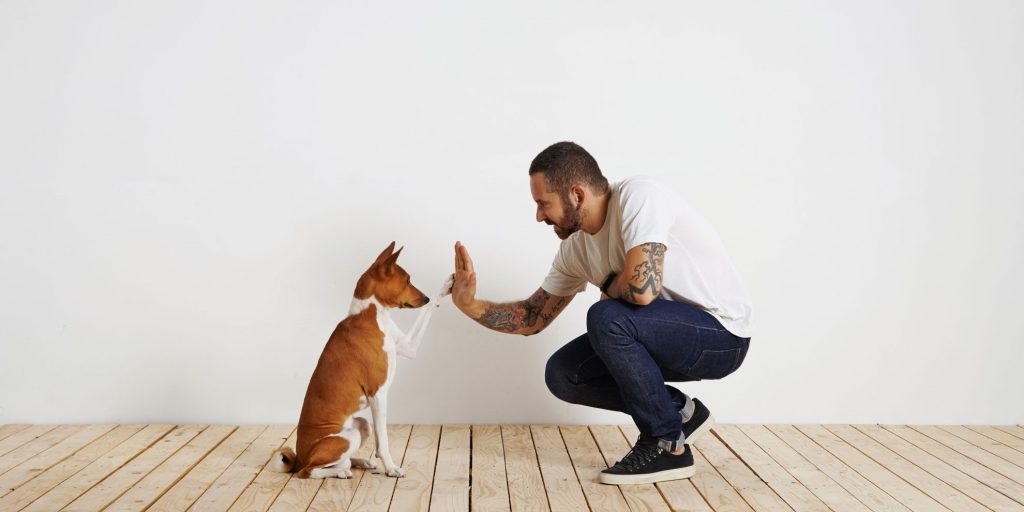Success in Dog Training – How to Achieve it.
In this Holidays4Dogs training article, we discuss some hints and tips for embarking on a dog training programme with the family pooch. If you’re wanting to achieve success in dog training and make the very best of the partnership with your dog – you’ve come to the right place!
When training your dog, or puppy, it is crucial to maintain consistency. Keep up repetition and try to get your timing absolutely right. However, the best advice is to always try and set your dog up for success. By doing this, they learn faster and, together, you will make successful progress.
If you’re pretty sure your dog is not going to understand something you’ve asked them to do – don’t ask it.
If, for example, your dog has not mastered a good recall in a quiet environment at home, they’re unlikely to come back in a situation where there are loads of distractions.
Unfortunately, this is setting your dog up to fail. It’s not because you’re dog isn’t listening to you – it’s because training hasn’t been consistent enough for the dog to REALLY understand what the brief is. Sadly, it’s often the reason why many owners become frustrated, or even give up on their dog.
By not understanding the importance of baby steps in dog training, there is the real possibility the relationship between owner and dog, is gradually eroded.
Keep it simple and build up.
Success in dog training depends on taking things slowly and consistently. Think of dog training like building bricks. Start by putting together just two, then a few more; building on the foundations you started with. Training in this way is the same for puppies or, adult dogs -(rescue dogs, for example).
By gradually working in this way, you can build ever more complicated patterns. Just like children, dogs learn in stages. They also always learn things better when they start out, without distractions going on around them.
For example, even when you have taught your dog to perform a lovely sit stay in the quiet of your living room, this does not mean they will perform this at a busy park, or at the vets, the following day.
When you first start to train your dog, you need to begin in a quiet place where there are no other distractions. Gradually, build distractions into subsequent training sessions, repeating what they have learnt, but slowly increasing distractions.
What does it mean to set your dog up for success?
 This simply means making it easier for the dog to understand what you mean. It very often means managing the environment and making it harder for them do the ‘wrong’ thing. By doing this, you will be able to achieve success in dog training much more quickly.
This simply means making it easier for the dog to understand what you mean. It very often means managing the environment and making it harder for them do the ‘wrong’ thing. By doing this, you will be able to achieve success in dog training much more quickly.
For example, if your dog chases squirrels, don’t try and teach them to come back to you, in the presence of squirrels 🙂
(For more information on prey drive in dogs read out other Holidays4Dogs article here).
Aim for tiny steps. When teaching your dog a new behaviour, set up your surroundings so that they have less chance to fail. (e.g. become distracted, engage in behaviour other than that which you are asking for).
Manage situations carefully BEFORE they have chance to fail. For example, don’t ask the dog to come back while they are playing with other dogs if they have not had chance to learn recall with fewer distractions.
Add distractions to your training routine GRADUALLY . Don’t let the dog fail by asking them to do something you know they don’t fully understand. This would be unfair on anyone, let alone a dog.
Make sure rewards are always highly desirable. High value treats such as cooked chicken, or liver, will encourage your dog to focus.
Join a good dog training class for help and support.
Conclusion.
Success in dog training depends on several factors, but being calm and consistent is key. Dogs are pretty clever and they are all capable of learning quite complex skills. However, they need us to communicate to them in a meaningful way.
Always train your dog with positive reinforcement and never punishment. Avoid demanding too much of your dog before they are ready. Teaching your dog new skills should be an enjoyable experience for both you and your dog. Always stop if you feel frustrated – or, your dog seems confused. Keep training sessions short and fun.




